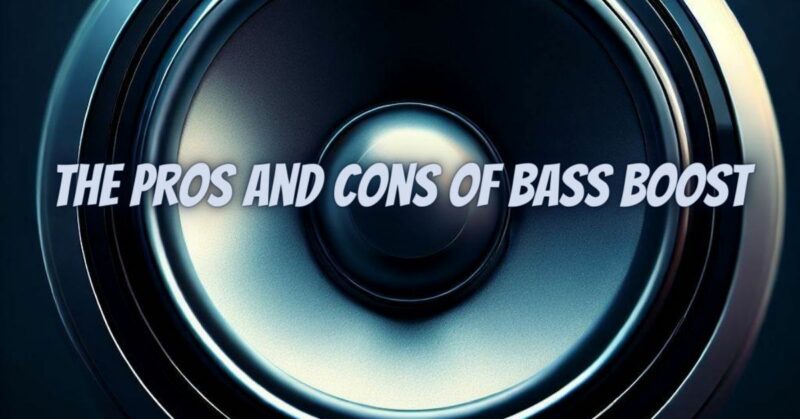Bass boost is a feature found in many audio systems, headphones, and amplifiers that allows you to enhance the lower frequencies of your music. While this feature can be appealing to bass enthusiasts and those who enjoy a thumping low end, it also comes with its own set of advantages and disadvantages. In this article, we’ll explore the pros and cons of bass boost to help you understand when and how to use it effectively.
The Pros of Bass Boost
1. Enhanced Low-End Presence:
The most apparent advantage of bass boost is its ability to enhance the bass frequencies in your music. This can add depth and impact to genres that rely on strong basslines, such as hip-hop, EDM, and reggae.
2. Personalized Sound:
Bass boost allows you to tailor the audio output to your personal preferences. If you enjoy a bass-heavy sound signature, you can use this feature to achieve the desired balance.
3. Immersive Audio:
For certain types of content, like action movie soundtracks or video game audio, bass boost can make the experience more immersive by replicating the rumble of explosions and impactful moments.
4. Compensation for Weak Bass Sources:
If you’re listening to music from a source with inherently weak bass, like older recordings or low-quality audio files, bass boost can help compensate and make the listening experience more enjoyable.
The Cons of Bass Boost
1. Distortion:
One of the primary drawbacks of excessive bass boost is the potential for distortion. Pushing the bass too far can lead to clipped or distorted audio, which not only sounds bad but can also damage speakers or headphones over time.
2. Unbalanced Sound:
Overly boosting the bass can result in an unbalanced sound profile, where the bass overwhelms the midrange and treble frequencies. This can lead to a muddled and less enjoyable listening experience, especially for genres that rely on clarity and detail.
3. Poor Speaker and Headphone Matching:
If your speakers or headphones are not designed to handle the increased bass levels, you may experience reduced sound quality and potential damage to your audio equipment.
4. Room Acoustics:
In certain room environments, excessive bass boost can exacerbate issues with standing waves and bass nodes, leading to uneven bass distribution and a less-than-ideal listening experience.
Finding the Right Balance
To make the most of bass boost while minimizing its drawbacks, consider these tips:
- Start conservatively: Begin with a modest amount of bass boost and gradually increase it until you reach the desired level without distortion.
- Use quality equipment: Ensure that your speakers or headphones are capable of handling increased bass levels without compromising sound quality.
- Consider room acoustics: Be mindful of the acoustics in your listening space, as they can impact how bass frequencies are perceived. Room treatments may be necessary to address any issues.
- Adjust for different genres: Recognize that bass boost may be more suitable for certain genres than others. Be willing to adjust or disable the feature based on your music selection.
- Protect your hearing: Avoid listening at excessively high volumes, especially when using bass boost, as it can be harmful to your hearing.
In conclusion, bass boost can be a valuable tool for tailoring your audio experience to your liking, but it should be used judiciously to avoid distortion and imbalanced sound. By understanding its pros and cons and making thoughtful adjustments, you can enjoy the benefits of enhanced bass without sacrificing audio quality.


